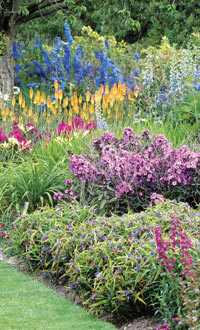- Flowers
Flower Bulbs Allium Bulbs Anemones Begonia Tubers Crocus Bulbs Daffodil Bulbs Dahlia Tubers Hyacinth Bulbs Lily Bulbs Tulip Bulbs Woodland Flower Bulbs Other Flower BulbsFlower Plants Annual Bedding Plants Children's Flower Plants Clematis Climbing Plants Cottage Garden Plants Exotic Plants Flowers For Cutting Plants Foliage Plants Greenhouse & Indoor Plants Ground Cover Plants Hanging Basket Plants Lavender PlantsHardy Geraniums Herbaceous Border Plants Heuchera Pansies and Violas Patio Plants Water Plants Window Box Plants Winter Bedding Plants Hydrangea Large impact plants Recommended By Our Experts
- Fruit & Vegetables
- Trees, Shrubs & Ornamentals
- House Plants
- Tool Shed
Garden Tools & Equipment Barrows and Trolleys Garden Solutions Harvesting Plant Supports Seed Sowing Tree Stakes Water Butts Weed Control Hand Tools Secateurs, Snips and Pruners WorkshopGarden Irrigation & Watering Irrigation Kits Water Butts Hoses & Sprays Miscellaneous Fertilisers Plant Pots Hanging Baskets Plant Protection Garden Compost All Compost
- Outdoor Living
Garden Living Barbecues & Firepits Garden Storage Solar Lights & Lighting Fixtures & Ornaments Awnings Sail Shades Garden Clocks Landscaping Lawn Edging PavingPatio Heaters Gas Patio Heaters Electric Patio Heaters Fire Pits, Chimeneas, Fire Baskets Wallmounted/Ceiling Patio Heaters Freestanding/Table Top Patio Heaters Water Features Solar Powered Water Features Mains Powered Water Features Indoor Water Features Outdoor Water FeaturesGarden Furniture Rattan Furniture Parasols Garden Benches Dining Sets Loungers Wooden Furniture Party Tents & Gazebos
- Wild Birds
- Gardening Info
- Special Offers
- • Break up the soil with a garden fork, aiming to dig to at least the depth of the blade of your fork or spade.
- • Incorporate plenty of organic matter, such as compost or well-rotted manure to improve the soil structure and provide nutrients for your plants.
- • When your plug plants arrive, stand them up and, if they seem dry, water them, letting the excess water drain away.
- • Pot them on into large module trays or small individual pots.
- • Make sure the compost doesn't dry out, but ensure that water can still drain away so the roots don't become waterlogged.
- • Acclimatise them to outdoor temperatures for at least a week before you plant them out into their final position by putting them outside during the day, and bringing them inside – to a shed or greenhouse – at night.
- • A greenhouse, cold frame, or sheltered spot next to a wall outside will offer the young plants some protection.
- • If your perennials are tender or half-hardy, make sure there’s no chance of frost before permanently planting them out.
- • Water thoroughly before planting out.
- • Dig a planting hole that’s one and a half times the size of the root ball. Gently slide the plant out of its container and carefully tease out the roots around the side and bottom of the root ball with your fingers.
- • Place the plant in the prepared hole and check that the crown of the plant sits at the same level in the ground as it was in the pot.
- • Fill the space around the root ball with soil and firmly press the plant in.
- • Water again thoroughly after planting.
- • Dig a hole that’s wide enough to accommodate the bare-root with its roots spread out, and deep enough so that the crown of the plant is just a few centimetres below soil level.
- • Backfill the hole with soil and press the plant in gently.
- • Leave a slight depression around the plant – this will help to direct water towards the roots.
- • Water well to settle the soil.
- • Dig a shallow trench and plant the rhizomes at the soil surface.
- • Make sure that the top of each rhizome is exposed to the air.
- • Planting them too deeply may cause the rhizomes to rot.
- • Mulch annually in the spring with a 5-10cm layer of compost, well-rotted manure, or recycled green waste (like chipped bark) around the crowns of the plants (take care not to bury the crowns themselves). This will help to suppress weeds, retain moisture, and improve the soil structure.
- • Apply a balanced slow-release fertiliser to the soil in the spring to encourage the best flowers.
- • Clip some woody perennials, such as penstemons, close to the base in the spring.
- • You can also mulch your perennials annually in the autumn, following the same steps as those laid out for the spring.
- • Cut back any dead foliage right back to the base (when your perennial has finished flowering). But keep in mind that some perennials, such as oriental poppies, have attractive seed heads, whilst grasses have attractive foliage so you may wish to leave these intact for winter interest.
- • Loosen the soil around your perennial and lever it out of the ground with a garden fork.
- • Take off any dead leaves and stems.
- • Divide the clump into sections by inserting two garden forks back-to-back in the centre of the clump and moving the forks backwards and forwards to tease it apart.
- • Further divide the sections into as many pieces as you require, although make sure you leave at least two growth buds per piece. The bigger the divisions, the quicker they will establish and flower.
- • For tough or fleshy roots, you can divide your perennials with a spade. Make sure to slice through the crown and leave pieces with at least two growth buds.
- • Replant the divisions straight away at the same depth as the original plant.
- • Ensure the roots are well spread out in their planting hole and the plants are firmed in. Water thoroughly afterwards.
- • Use supports: If your perennial is said to grow tall or produce top-heavy flowers, use stakes early on in the growth process to support them so you can tie in new growth as it appears. Don’t wait until the plants have already begun to flop over.
- • Dead-head: Dead-heading (removing spent blooms) may encourage further flowers, although some perennials, such as oriental poppies, Chinese lanterns, and echinacea have very attractive seed heads which you might like to leave on the plant.
- • Weed regularly: If you allow weeds to grow and seed, they will start popping up through the crown of your plant, which can be tricky to eradicate.
Join Our Gardening ClubVan Meuwen Gardening Club
Become a Member
Join our Gardening Club to unlock exciting perks and discounts!
JUST £10 for one year's membership
10% OFF EVERY order placed online £20 worth of Van Meuwen Vouchers Exclusive members only deals Join NowHow to plant and grow perennials
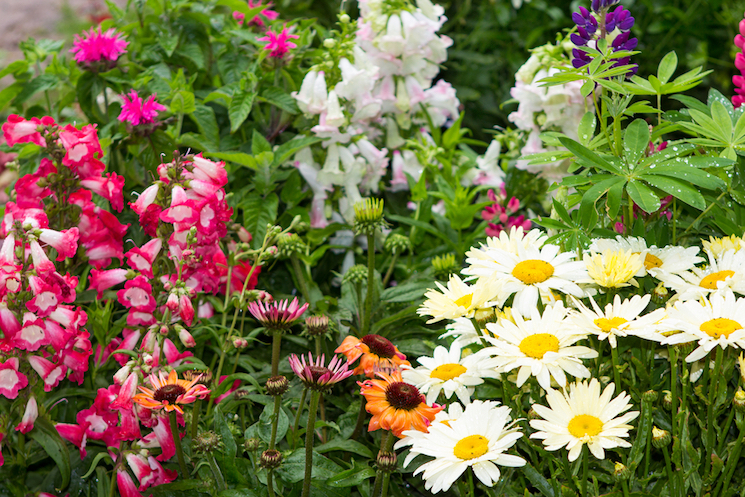
Our expert guide to help your perennials thrive in your garden
Image: ShutterstockBotanically speaking, a perennial plant is one that lives for many years. Some die back in the winter, others are evergreen. They vary widely in terms of size and shape, referring to all manner of plants that grow in beds and borders that aren’t bulbs, shrubs or trees.
To compare, an annual plant lives for one growing season, while biennials live for two. A perennial plant lives longer than both, often coming back for multiple growing seasons.
Long-lasting, colourful and easy to grow, perennials grow well in beds, borders and containers. Here’s how to plant and grow perennials for an explosion of low maintenance colour in your garden.How do you plant perennials?
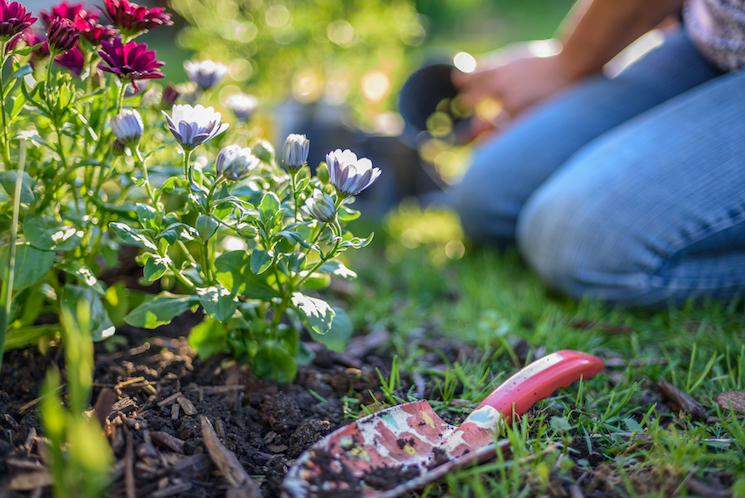
Take the time to properly prepare the planting site
Image: ShutterstockYou should plant out or pot up your perennial plants as soon as possible. If you need to delay, keep your plants in a bright, cool and frost-free position, making sure that the roots stay moist.
Bare-root perennials can be planted straight into the ground, while plug plants are best potted up and grown on before planting out into their final positions. Since perennials will stay in your garden for a long time, it's important to take the time to properly prepare the planting site (or container):How do you plant perennial plug plants?
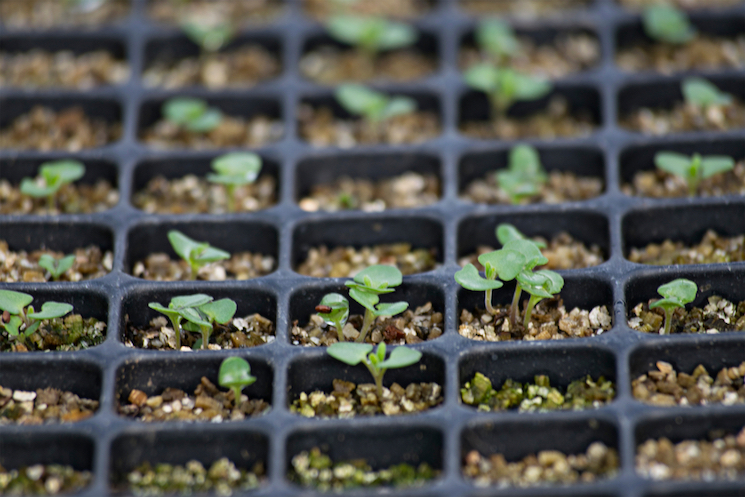
Plug plants save time and produce strong, healthy plants
Image: ShutterstockMany perennials are sold as plug plants. Professionally raised, these plants have been grown in greenhouses and have good root systems and general health. Not only do plug plants ultimately save you time, but they produce strong, healthy plants.
Read our article on ‘How to grow plug plants’ for more information.
How do you plant perennials in containers?
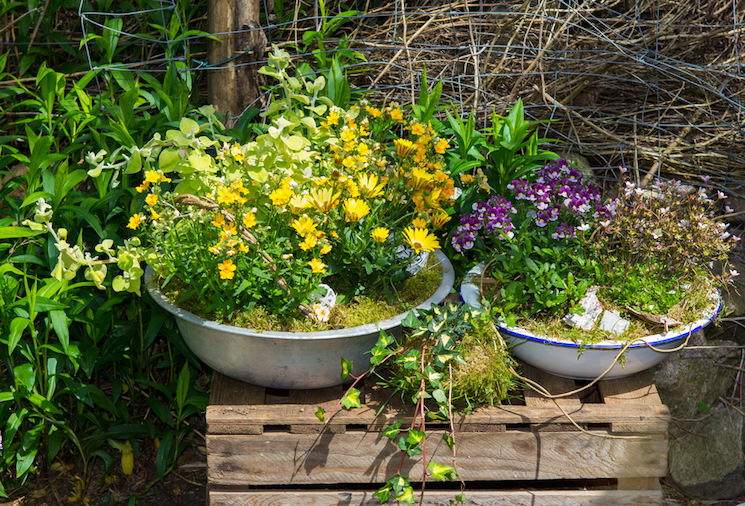
Perennials are happy with container planting
Image: ShutterstockMany perennials will happily grow in containers, making this an easy, space-efficient option for gardens of all sizes. Here’s how:
How do you plant bare-root perennials?
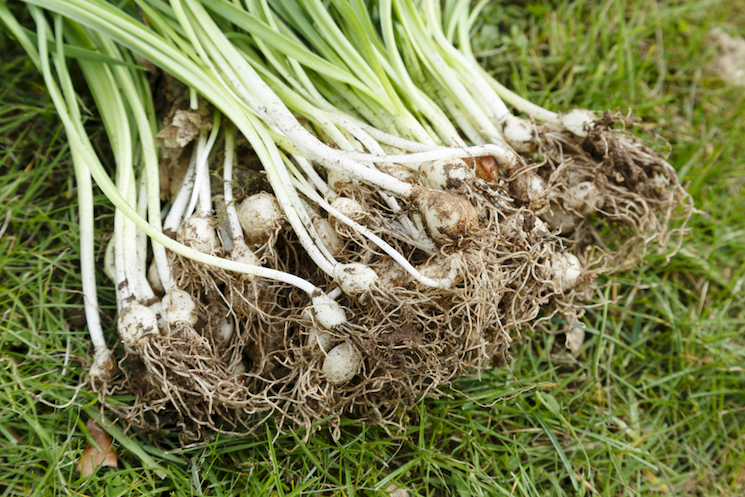
Speed is important when planting out bare-root perennials
Image: ShutterstockBare-root perennials are just what they sound like – a mass of roots. They should be planted out as soon as you get them to make sure they don’t become dehydrated.
The packaging in which bare-root perennials arrive will usually keep them alive for a short period, but if planting is delayed then it’s best to 'heel-in' your plants. This simply means digging a temporary trench in ordinary garden soil and placing the roots inside. Cover the roots with soil, firm in, and water well. This will keep your plants alive until you’re ready to plant them in their final position.
If the ground is frozen or waterlogged, don’t worry – just pot up your bare-root perennial in a container, water it sparingly, and place in a cool position for planting out at a later date. When you’re ready, here’s how to plant out a bare-root perennial:For a quick recap, watch Van Meuwen video guide on how to plant bare root perennials.
How do you plant rhizomes?
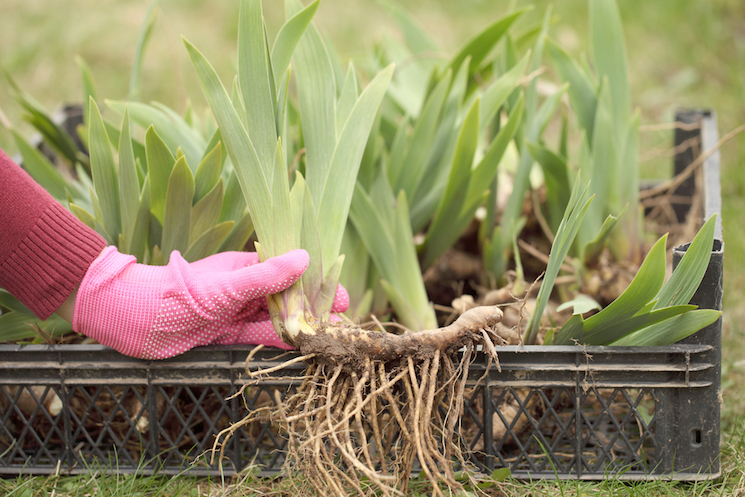
Rhizomes need to be planted near the surface of the soil
Image: ShutterstockRhizomes are swollen underground stems. They’re found on plants such as the bearded iris. Happily, planting them out is simple:
How do you look after perennials?
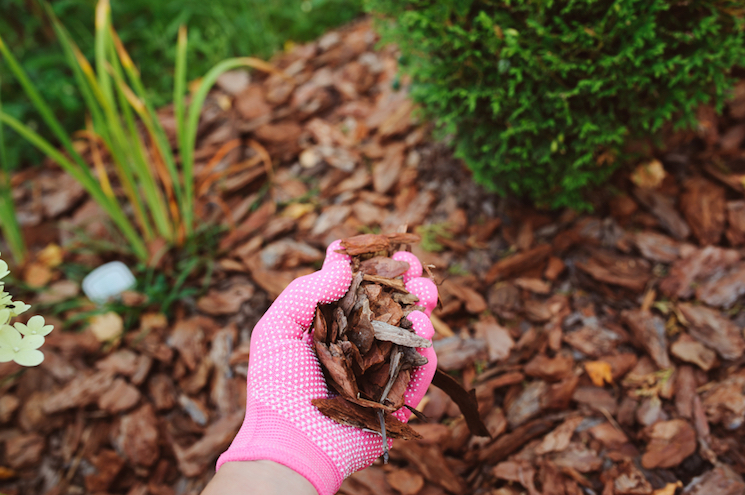
There are a few ways to care for perennials, depending on the season
Image: ShutterstockIn addition to a long lifespan, perennial plants are relatively low maintenance, making them a popular choice for gardens. Typically, perennials sprout in the spring, flower in the summer, and die down in the autumn, spending the winter as roots underground. So, depending on the season, there are a couple of things you can do to keep your plants healthy and attractive.
Spring careAutumn care
Lifting and dividing perennials
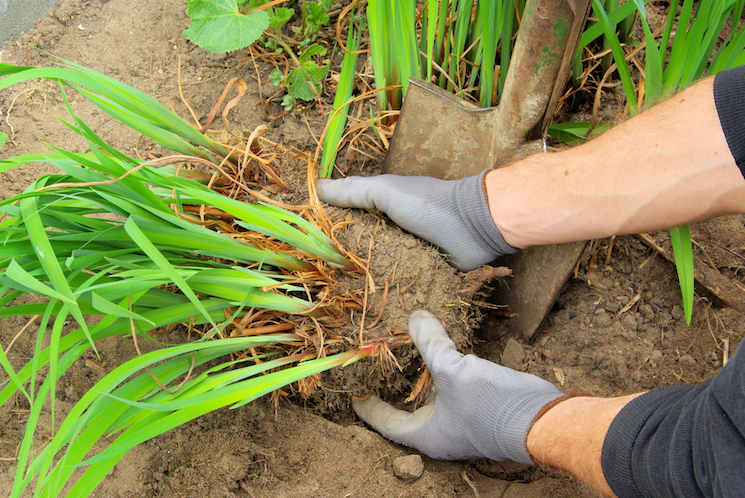
Lifting and dividing improves the performance of your perennials
Image: ShutterstockMost perennials should be lifted and divided every three years – it’s a small task in the grand scheme of a perennial’s life, but it will make sure the plant maintains vigorous growth so it’s well worth it. You can do it sooner if the clumps have become congested or the flowering is less profuse.
Divide the plants in the autumn or spring before they start their active growth phase. This also provides a good opportunity to work in some well-rotted manure or compost to maintain soil fertility.Top tips for growing perennials
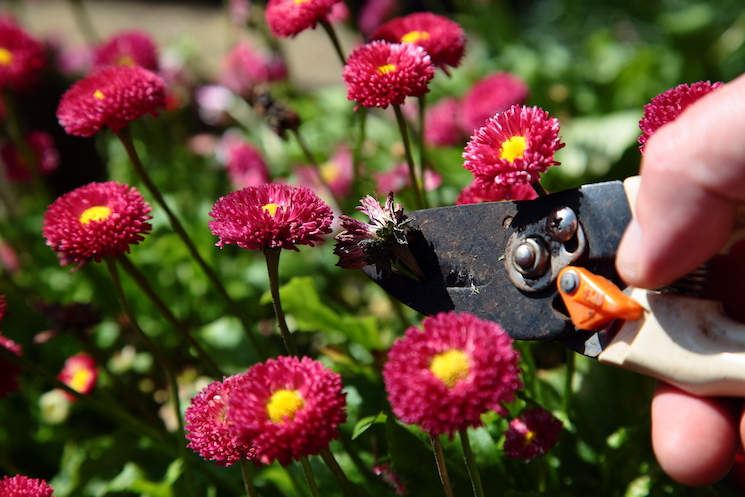
A little TLC will go a long way with perennials
Image: ShutterstockUltimately, perennials are a low maintenance, colourful addition to any garden and provide interest for years to come. Here are some top tips:
Do you grow perennials in your garden? Do you have any top tips you’d like to share? Let us know over on our Facebook page, and find some useful tips from other gardeners while you’re there!
Sign up to the Van Meuwen Gardener's Club for Special Offers
Delivery Information Privacy Policy Cookies Terms of Business Affiliate Programme Planting & Cultural Advice Contact Us© 2024 Van Meuwen. All rights reserved. A division of Branded Garden Products Limited.
- House Plants



